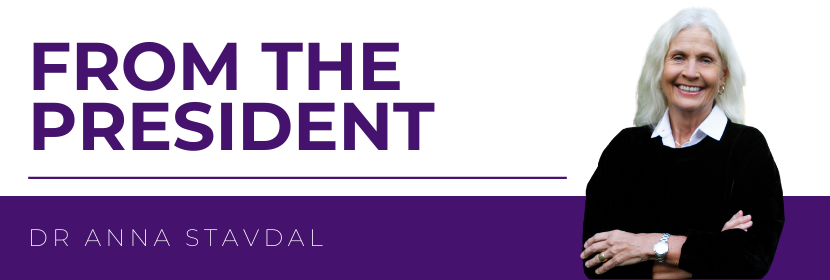From the President: November 2022
 Español Français
Español Français 中文
Negative Side Effects of Clinical Guidelines?
Medicine’s ‘gold standard’ these days is Evidence Based Medicine (EBM). Most of us agree that what’s best for our patients is treatment based solidly on scientific knowledge. We rarely recall, however, that the concept of clinical guidelines based on EBM is quite a new-comer to the history of medicine. As recently as the 1980’s, when I graduated from medical school, no reference was made to ‘guidelines’ during our case conferences. We relied on our textbooks and what we’d learned from our teachers to arrive at diagnoses and treatment plans.
In fact, EBM didn’t emerge as a trend or a ‘movement’ until the start of the millennium. The Cochrane Foundation was a prime mover internationally with their early marketing slogan: “Trusted evidence. Informed decisions. Better health.”
Since then, national, regional and international stakeholders and agencies have come up with a multiplicity of clinical guidelines. Many if not most of these resulted from consensus processes, mainly involving secondary care specialists from a variety specialties.
While ‘evidence’ and ‘consensus’ sound good, can there be too much of a good thing? The recent USA “Cochrane Sustainable Health Care” study regarding “overuse and de-implementation” calculated that each Primary Care Doctor would have to use 26.7 hours of each 24-hour day to provide the health care services recommended by the guidelines. If the care were offered in the context of a Team Practice, that could be reduced to [merely] 9.3 hours per day.
How could the medical community be so oblivious as to paint itself into such a corner?
Guidelines are based on research results and agendas that are set up by a variety of agencies and stakeholders. End users, meanwhile, are left in the dark as to the origins of the research questions, the theories on which they are based, and the sources funding the projects; these remain unspecified. Of even greater consequence than this lack of transparency is the near total failure of the research agendas to integrate, or even mention, our specialty's values base. The very complexity of a person centered approach, which aims toward being comprehensive, does make the process of designing well-contextualized, evidence based research more difficult. Not even making that effort, however, can yield only fragmented knowledge – knowledge broken into decontextualized fragments that may prove neither applicable nor useful within a clinical setting. Add to that the reality that multiple, evidence based guidelines may prove incompatible with each other, not only contradictory but potentially dangerous when we attempt to apply them to the individual in front of us.
In 1996, while EBM was on the rise, a well-known Norwegian writer and thinker, Dr. Geir Sverre Braut, reflected on this sort of dilemma in an essay published in our National Family Medicine journal. There he proposed that a broader concept could serve as our ideal – ‘Value Based Medicine’. This, he suggested, came of combining EBM with contextualized, interpreted/narrated knowledge. “Value Based Medicine,” he wrote, “is provided by those who believe in the truth, but at the same time choose to prove what is ‘not proven’, and then combine the two.” He termed that mix, ‘Wisdom Based Medicine’.
As first line providers of medical care we have a duty to stay abreast of developments within medicine that might prove beneficial to our patients. We have an equally important duty to protect them from measures which might harm them. As the saying goes, To a man with a hammer, everything looks like a nail. No matter how useful Evidence Based guidelines may be as tools, they ought not become that sort of hammer.
This is where reflection, the hallmark of Family Medicine, comes in. In clinical situations, considering three simple questions may help us relate to guidelines wisely:
Is the guideline based on scientific criteria that are “
true”?
Is it
relevant – to you, your patient, and the community – that is, to the
context within which it’s being applied?
Is it
useful for this individual – your patient in this specific situation?
Because one size almost never fits all, our obligation to reflect and then tailor our actions remains imperative. Practitioners of Family Medicine provide personalized care. When care serves our patients’ best, they become healthier. When lots of healthy individuals come together, healthy societies are born and may grow.
Dr Anna Stavdal,
WONCA President